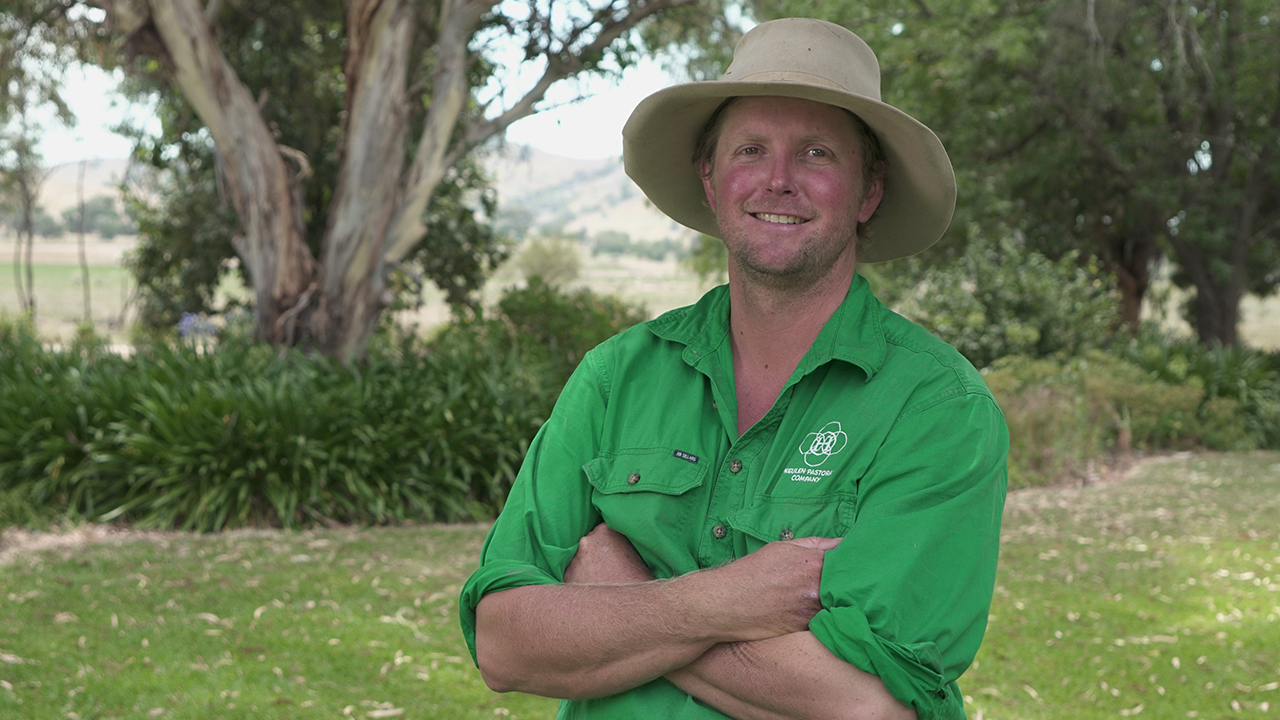
Nick Gay
Nick Gay
In Nick Gay’s experience, good management and genetic tools are the criteria for success when it comes to breeding Merinos that will pay dividends.
Nick and his wife Pen run a Merino and first-cross flock at Hovells Creek, NSW, where they are set on producing sheep that consistently perform despite the challenging conditions of their production zone.
“The breeding objectives for our pure Merino flock are to produce a high growth, good carcase sheep that is going to stand up to this high rainfall environment, with a white soft wool that’s about 18.5 micron,” Nick said.
“Meanwhile, as most of our first-cross ewe lambs are sold to local clients to be joined while they’re still lambs, our focus with the crossbreds is getting them up to a joinable weight for our clients and boosting weaning rates.”
Built to achieve
Australian Sheep Breeding Values (ASBVs) have been a vital tool for achieving the breeding objectives Nick and Pen have set for their flock.
“It’s all about selecting the rams that help us achieve our breeding objectives in both our Merino and crossbred flocks,” Nick said.
“If you’ve got two really good rams that look exactly the same and you want to make a selection between them, you need the ASBVs to make sure you’re buying the ram that helps you achieve your breeding objective.
“All the rams we purchase have full ASBVs from a stud that is capturing data on their whole flock, so we can see both in and across the flock how those rams stand up in the industry.”
In recent years, Nick has seen his attention to genetics drive productivity to new heights – and his clients are noticing the difference.
“Selecting for fertility and number of lambs weaned has meant we’ve seen our scanning rates rise from 120–125% last year to 160% this year, which is the best we’ve achieved so far,” Nick said.
“We’re also getting some really good results for our clients by focusing on the genetics that pay them back.
“One client bought our ewe lambs and joined them at seven and a half months to achieve 120% lambs to ewes joined, before joining them the following year and achieving a 138% scanning rate.”
Benchmark to benefit
Using the other genetic tools available to assess flock performance is another step Nick has taken to ensure his flock’s growth, fertility and weaning rates maintain their edge.
“There are some really exciting tools now that let you look underneath the skin and see if you’re achieving what you set out to do,” Nick said.
“Commercial producers can now do a Flock Profile test to understand the genetics of their sheep flock, and costs for DNA testing are continuing to come down all the time if you wanted to see where your sheep are at.
“Genetic tools really just help you identify the highly productive sheep and back the ones that are going to perform for you – and that will flow through directly on to your profitability.”